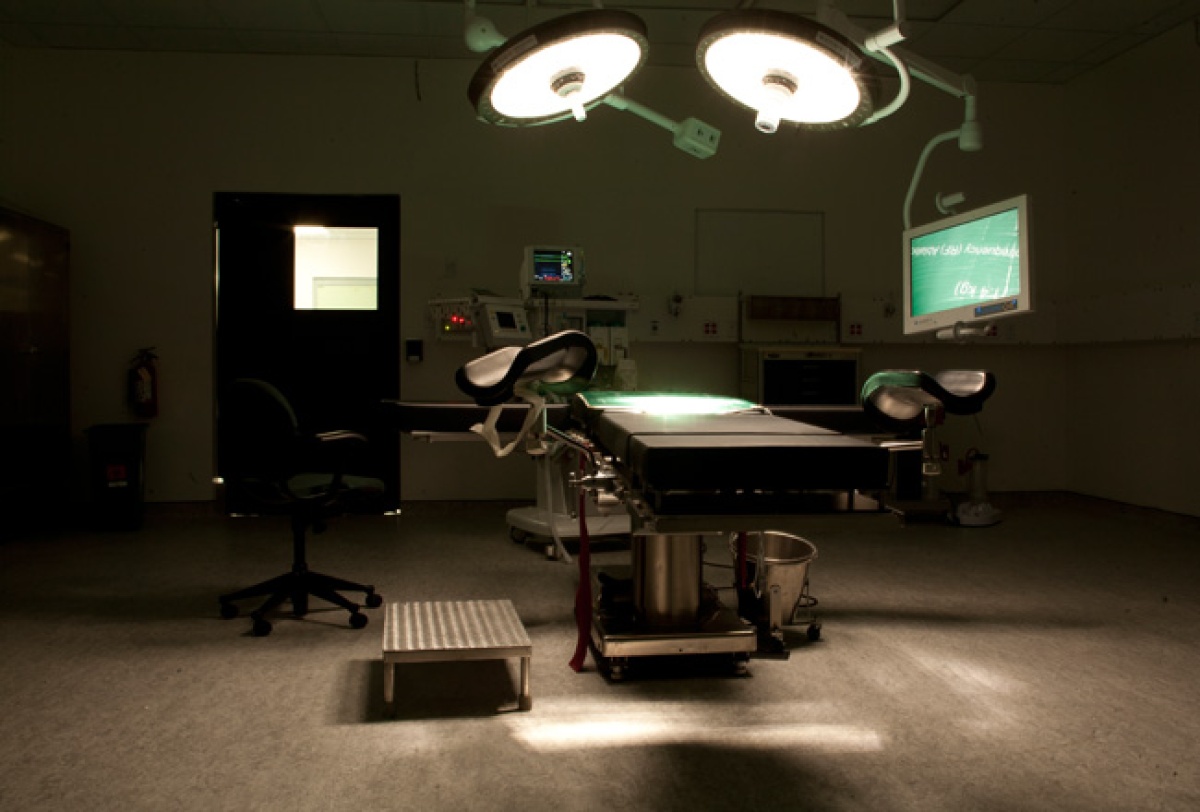Five Feats of Engineering at University Hospital
Posted on Apr 26, 2013

It was by way of a joke that Dr. Paul Farmer introduced Ann Polaneczky to a crowded room at PIH’s Boston office. “What comes to my mind when I think of Ann, is stool,” Farmer said, causing the 24-year-old civil engineer to blush with pride. When the collective burst of laughter tamped down, Farmer qualified the punch line by expounding on the importance of Hôpital Universitaire de Mirebalais’ (University Hospital ) wastewater treatment system, and how Polaneczky helped shape it.
“The wastewater treatment system at Mirebalais, the guts of the hospital, is truly remarkable. It takes the wastewater, the gray water as it’s called, and runs it through a pretty sophisticated but easy-to-maintain system that gets checked every day,” Farmer said. “We never had that in Haiti—not just in a hospital, we never had it at any public-sector institution. It’s hard to know why these things are so significant without knowing how absent they are in a lot of places in the world. This system is just one example of how a modern hospital runs that’s worth getting to know.”
With that sentiment in mind, we asked Polaneczky, PIH’s project engineer, to walk us through five of her favorite feats of engineering at University Hospital.
Wastewater Treatment System

Photo: Partners In Health
What it does: Every drop of wastewater produced at University Hospital—whether from a toilet, an operating room sink, or dirty laundry—passes through this low-energy, low-maintenance system. The water first enters a biological treatment process known as aerobic digestion in which naturally grown bacteria decompose organic waste and devour pathogenic organisms, such as Vibrio cholerae—the bacterium that causes cholera. From there, the water is treated with chlorine for further disinfection. Right now, the system can treat 50,000 gallons of wastewater per day to U.S. EPA standards. If needed, Polaneczky says, it can be expanded to treat 75,000 gallons a day.
Why it’s important: The immediate benefit is that the system significantly reduces the threat of waterborne diseases, such as cholera and dysentery. But there’s a less tangible benefit that Polaneczky is keen on: “We want to show that it’s possible to treat wastewater in an efficient, economical, and sustainable way in Haiti and other low-resource countries,” she says. “This shows that it can be done.”
Incinerator

Photo: Partners In Health
What it does: This school-bus-size machine allows University Hospital staff to properly dispose of biohazardous medical waste and used sharps, including syringes and scalpels. Polaneczky explains that the system meets U.S. EPA emission standards. How? The waste is burnt in a controlled fire in the machine’s first chamber. The resulting smoke is captured in a second chamber that reaches 1,000 degrees Celsius—similar to the temperature of liquid lava—and essentially gets vaporized. The end result is steam and a small pile of ash.
Why it’s important: Properly disposing medical waste is critically important, yet many health care facilities in Haiti don’t have the necessary equipment to do so. It’s not uncommon for human waste to be mixed with sharps and garbage, and then burnt in crude devices or trash pits. The noxious fumes are bad for the environment and human health. As University Hospital integrates into Haiti’s health system, the incinerator may serve as a central location to dispose of medical waste produced at other PIH/ZL sites.
Sign up here to get updates on our work in Haiti and beyond.
Fiber Optic Network

Photo: Stephanie Garry/Partners In Health
What it does: Polaneczky describes the fiber optic network as the “backbone of the hospital,” providing high-speed Internet access throughout the facility. A robust server package donated by HP optimizes it. High-tech and resilient, University Hospital’s IT system supports everything from patient registration to inventory management to digital radiography.
Why it’s important: University Hospital is the first teaching hospital in central Haiti. When medical education and training begin, Haitian doctors can consult with partners in Boston and beyond as needed through video conferencing and other digital technology, which extend from the operating rooms to the hospital’s classrooms. On a day-to-day basis, the network improves efficiency and facilitates monitoring, evaluation, and quality improvement projects.
Medical Gas System

Photo: Rebecca E. Rollins/Partners In Health
What it does: Behind the walls of University Hospital is a labyrinth of copper pipes and vacuum and air lines that ensures patients in need of oxygen have quick access to it—whether they’re undergoing surgery, being cared for in the emergency room, or in recovery. A major asset of University Hospital is that it has its own oxygen concentrator, a device that removes nitrogen from the air to produce medical-grade oxygen.
Why it’s important: Without this system, we’d need to have bedside oxygen tanks available for any patient in need of oxygen, which is both expensive and logistically difficult. Additionally, suction and compressed air would need to be supplied for patients. Quick access to these oxygen and suction tubes allows us to deliver better care to more patients.
HVAC

Photo: Partners In Health
What it does: Given that University Hospital stretches over 200,000 square feet and includes a pharmacy that stores temperature-sensitive medications, effective climate control was a must. The hospital boasts four 12.5-ton rooftop cooling units and a separate 20-ton condenser for the pharmacy. In areas of the hospital where air conditioning would be a luxury, the designers opted for energy-efficient ceiling fans and elegant design that fosters natural air flow.
Why it’s important: It’s not about just keeping cool. “The HVAC system supports infection control in operating rooms and allows us to preserve medical equipment,” Polaneczky says. University Hospital’s HVAC system, she explains, utilizes HEPA filtration and laminar flow, meaning the air is pushed from ceiling to floor rather than across a room, which minimizes the risk of surgical infections.

